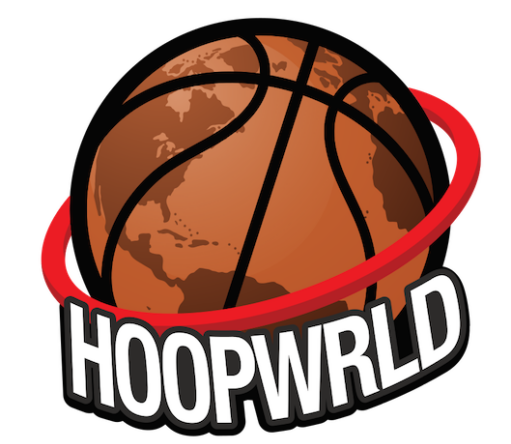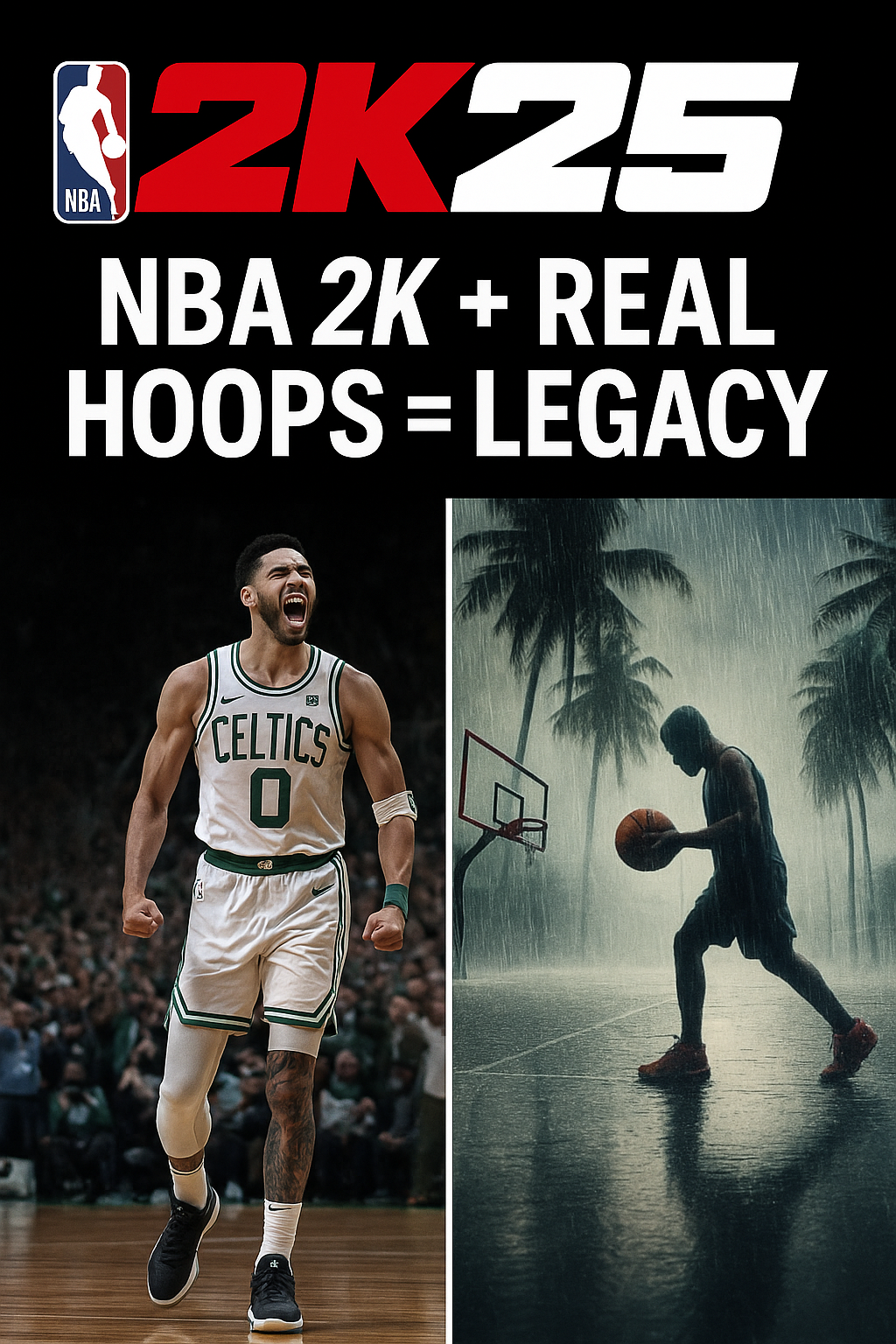Real talk: 2K can teach you basketball, but it can’t make you a baller. Here’s what actually transfers from the virtual hardwood to the real court—and what doesn’t.
By HoopWRLD Staff
Listen to article:
Yo, we’ve all seen that dude. You know the one—rolling up to pickup talking about his 99 overall MyPlayer, breaking down defensive schemes he learned from 2K, acting like he’s about to cook everybody because he averaged 30 in MyCareer. Then the ball gets checked up and suddenly bro is looking like he never touched a basketball in his life.
But here’s the thing: gaming and real hoops aren’t enemies. Done right, 2K can actually make you a smarter player. The key word? Supplement. Not replace. Never replace.
Let’s keep it 100 about what gaming can actually teach you about real basketball—and where you need to put that controller down and pick up a real rock.
The Real Translations: What 2K Actually Teaches
Court Vision That Actually Works
Marcus, a 24-year-old who runs pickup at his local LA Fitness, puts it perfectly: “2K taught me to see the court different. When I’m running point in MyCareer, I’m constantly looking for the open man, reading defenses, seeing how picks create opportunities. That vision? That actually transfers.”
He’s not wrong. When you’re controlling entire offensive sets in 2K, you start understanding basketball concepts that casual players miss:
- Pick and roll timing: Knowing when to attack the hedge vs when to hit the roller
- Spacing awareness: Understanding why five guys can’t all crowd the paint
- Help defense recognition: Seeing when that weak side defender is cheating over
“I used to just dribble around looking for my shot,” Marcus continues. “2K made me realize basketball is like chess. Every move creates a reaction.”
Basketball IQ That’s Actually Legit
2K forces you to learn real NBA concepts. You can’t just run ISO every play and expect to win on higher difficulties. The game teaches:
- When to take what shots: Learning shot selection through repetition
- Defensive rotations: Understanding help defense and recovery
- Situational basketball: End-of-quarter plays, foul situations, game management
Sarah, who plays in a competitive women’s league, credits 2K with improving her understanding: “The game taught me about different defensive schemes. When I see a 2-3 zone now, I know exactly where the gaps are because I’ve attacked them a thousand times in MyCareer.”
The Mental Game Edge
Gaming can build genuine basketball confidence. When you’ve run thousands of plays virtually, real situations feel familiar instead of chaotic.
“2K gave me the confidence to actually call plays during pickup,” says Trevor, a college intramural captain. “I knew what a horns set looked like, how to run it, what the reads were. That knowledge came from the game.”
The Hard Truth: What Gaming Can’t Teach You
Your Body Ain’t a Controller
Here’s where reality hits different. 2K knowledge means nothing if you can’t execute physically:
- Handles take real practice: Knowing combo moves doesn’t mean you can do them
- Shots need real reps: Button timing ≠ muscle memory
- Conditioning is everything: Virtual stamina doesn’t translate to real lungs burning
- Contact is different: Getting bodied in real life hits way different than 2K contact
“I knew every dribble move in 2K,” admits James, a former 2K addict who started taking real basketball seriously. “But when I tried them on the court? Turning the ball over every possession. My handles were trash because I never actually practiced them.”
The Speed of Real Ball
Real basketball moves at human speed, not controller speed. You can’t:
- Pause to think about your next move
- Restart when you mess up
- Expect perfect animations every time
- Rely on badge boosts to save you
Physical Tools Matter
In 2K, you can make a 5’7″ player dunk on centers with the right build. In real life? Physics doesn’t care about your overall rating:
- Height and wingspan can’t be upgraded
- Speed comes from real training, not attribute points
- Strength gets built in the gym, not with VC
- Jumping ability isn’t purchased with virtual currency
The Real Hoopers Speak
We talked to players who actually ball to get their take on the 2K crossover:
Marcus (LA Fitness regular): “2K helped my basketball IQ, but I still had to spend hundreds of hours in the gym working on my actual skills. The game taught me what to do—real practice taught me how to do it.”
Sarah (women’s league player): “Gaming gave me confidence and knowledge, but my jumper came from shooting thousands of real shots. You can’t fake that muscle memory.”
Trevor (college intramural): “2K made me a better teammate because I understood the game better. But I still had to earn my spot through real performance.”
James (pickup veteran): “I learned more about basketball from 2K than watching games, honestly. But translating that to the court took years of actual playing.”
The Science: Why Some Things Transfer
Sports psychologists confirm that pattern recognition and spatial awareness can transfer between virtual and real environments. Dr. Amanda Rodriguez, who studies video game learning, explains:
“The cognitive skills—reading defenses, understanding spacing, recognizing patterns—these can absolutely transfer. What doesn’t transfer are the motor skills. You can’t develop muscle memory through a controller.”
Research shows that gamers often develop superior:
- Decision-making speed in familiar situations
- Pattern recognition for complex scenarios
- Strategic thinking under pressure
- Spatial awareness and court mapping
But physical execution? That requires real reps, real sweat, real work.
The Bottom Line: Gaming as Your Basketball Tutor, Not Your Coach
Here’s the real formula for using 2K to improve your actual game:
Do This:
- Study the game through 2K’s realistic simulations
- Learn plays and concepts you can practice in real life
- Develop court vision by controlling entire teams
- Understand defensive schemes through repeated exposure
- Build confidence in familiar situations
Don’t Do This:
- Replace real practice with virtual practice
- Expect moves to work without drilling them physically
- Think ratings equal real ability
- Skip conditioning because your virtual player doesn’t get tired
- Ignore fundamentals in favor of flashy moves
The Real Champion’s Mindset
The best players use every tool available. 2K can be a legitimate part of your basketball education—but it’s supplemental learning, not primary training.
“I watch film, I play 2K, I study the game however I can,” says Marcus. “But at the end of the day, basketball is played with your body, not your thumbs. The controller can teach you what to think, but only the court can teach you how to play.”
Real recognition: Gaming can make you smarter, but only real court time makes you better.
So by all means, keep grinding those MyCareer games, learning those defensive concepts, building that basketball IQ through 2K. But when you close that console? Get to the gym. Hit the court. Put in real work.
Because at the end of the day, basketball is still played by real people, on real courts, with real consequences for every missed shot and lost ball.
The controller might teach you the game, but only the court makes you a player.
Want more real talk about gaming and hoops? Stay locked in with HoopWRLD for content that keeps it 100.
Tags: basketball skills, NBA 2K, real hoops vs gaming, basketball IQ, court vision, pickup basketball, basketball training





